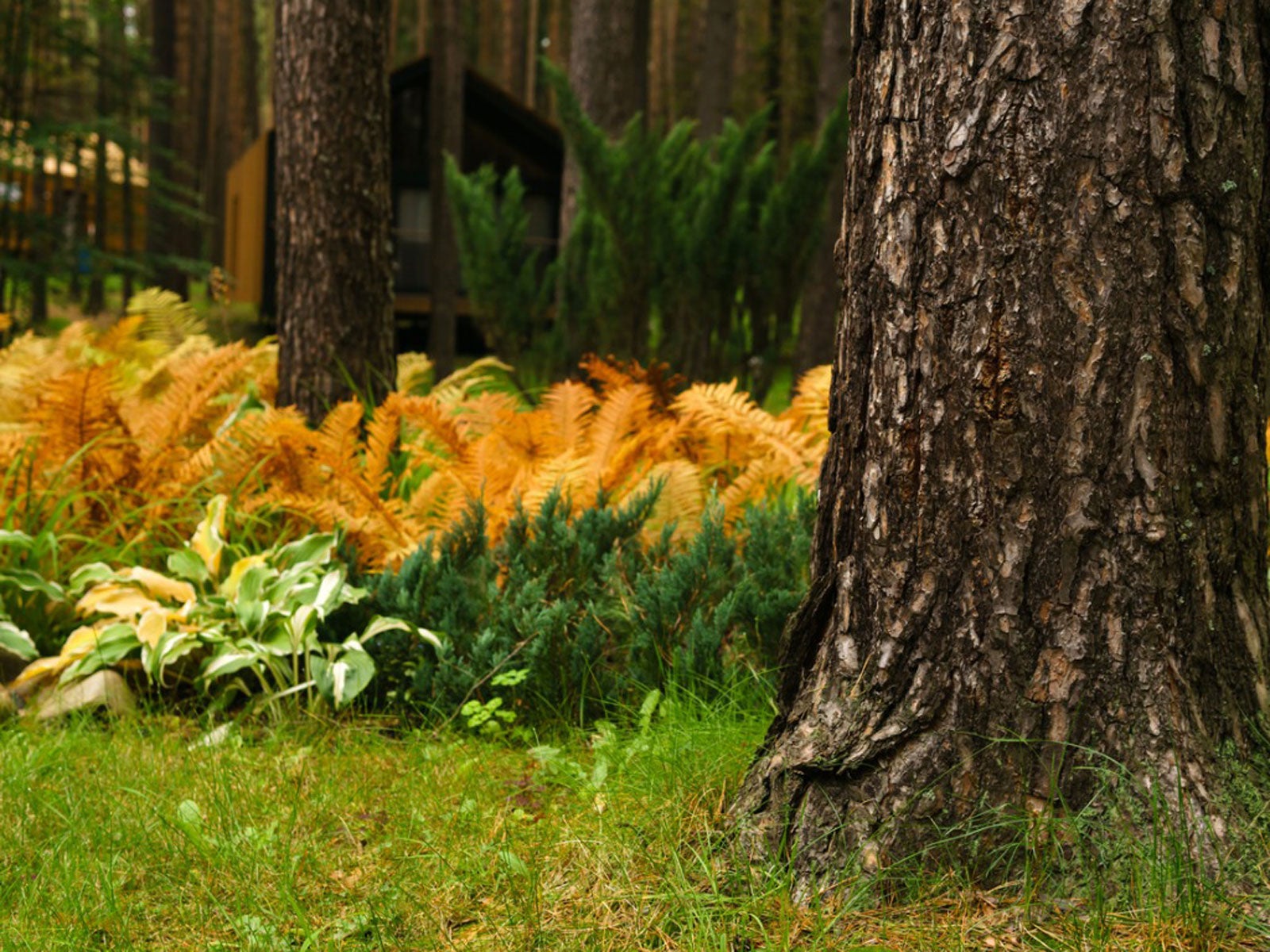Planting Texture Under Trees – Adding Texture In A Shade Garden

Gardeners whose landscapes are surrounded by mature trees often think of this as both a blessing and a curse. On the downside, a vegetable garden and swimming pool might not be in your future, but on the upside, there are plenty of gorgeous shade-loving options that can turn the space into a quiet, Zen-like oasis.
The key to this woodland retreat? Layering and incorporating shade plants for texture in woodland gardens under trees.
Native Plants for Texture in a Shade Garden
Shade plants are naturally found growing as understory plants beneath trees. They occupy a unique niche and provide habitat, food, and protection for many woodland creatures. Many shade plants don’t have flashy blooms, but what they do have is texture and often colorful foliage.
In fact, when looking for plants for texture in a shade garden, a great place to begin is by looking into native plants. Native plants have several benefits for use as texture in woodland gardens. First off, they have already acclimated to a shade exposure. Secondly, they attract beneficial insects of the region.
Native shade plants for texture also have another bonus. Trees take up lots of water and native species of shade plants are often drought tolerant reducing the necessity to provide additional irrigation. Lastly, because they are indigenous to the region, they are often extremely low maintenance.
About Texture in Woodland Gardens
The delightful thing about a garden is that it enlists all the senses. The same goes for a shade garden. A shaded woodland garden should tantalize the nose, ears, and eyes as well as the sense of touch, which is where texture comes into play.
The texture often begins with the outline of the garden which may include low stone walls and paths of pebbles or other tactile materials. It then extends to the use of plants for texture. The plants don’t necessarily have to be there to touch (although it’s sometimes hard to resist), but their different consistencies and colors alone make them obvious.
Gardening tips, videos, info and more delivered right to your inbox!
Sign up for the Gardening Know How newsletter today and receive a free copy of our e-book "How to Grow Delicious Tomatoes".
Shade Plants for Texture
Plants for texture in a woodland garden may include both perennial and evergreen shrubs, grasses, ferns, and shade loving perennials.
Shrubs to include consist of:
- Beautyberry
- Bottlebrush buckeye
- Deciduous azalea
- Mahonia
- Mountain laurel
- Ninebark
- Oakleaf hydrangea
- Rhododendron
- Shade tolerant holly
- Sweet pepperbush
- Viburnum
- Witch hazel
- Winterberry holly
Ferns are ubiquitous in shade gardens and no woodland garden would be complete without including them. Along with the varied textures of ferns a shade garden should include:
To add color and texture under trees and around your woodland garden, include:
- Caladium
- Chinese ground orchid
- Coleus
- Fox glove
- Impatiens
- Lady’s mantle
- Primrose
- Spotted dead nettle
- Wood spurge
Make groupings of shade plants for a greater emphasis on their textures and alternate these groupings of different plants throughout the shade garden for a truly integrated, yet tangible experience.

Amy Grant has been gardening for 30 years and writing for 15. A professional chef and caterer, Amy's area of expertise is culinary gardening.
-
 Moody Blooms For Spring: 8 Types Of Black Flowers To Add Drama To Spring Displays
Moody Blooms For Spring: 8 Types Of Black Flowers To Add Drama To Spring DisplaysFrom midnight burgundies to inky violets, several types of black flowers can enrich and embolden a spring display. Try these brooding bloomers for a moody garden
By Tonya Barnett
-
 My Homemade Orchid Fertilizer Always Brings More Blooms – Here's The Easy Recipe That Transforms Plants
My Homemade Orchid Fertilizer Always Brings More Blooms – Here's The Easy Recipe That Transforms PlantsScientist-turned-gardener Mary Ellen Ellis shares her tried-and-tested DIY orchid fertilizer recipe, plus more ingredients to try for healthy, happy plants.
By Mary Ellen Ellis